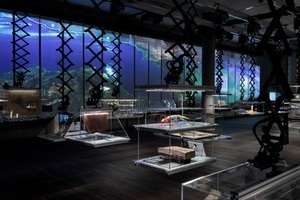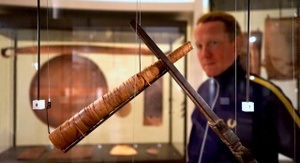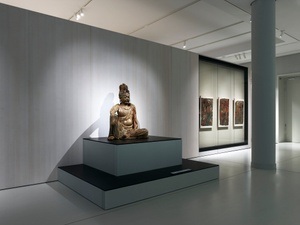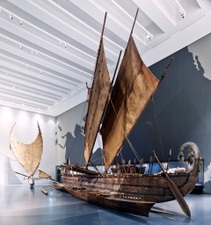How to Move and Respond II
In the organizer's words:
10/11.5.2025 - Saturday & Sunday, both from 1 pm
There is something magical about words and what they do to us and something singular in the way we use them. How to Move and Respond is an exhibition as text, in texts. A weekend-long program to see what language in and about art holds, can hold and how. Conceived as a group exhibition - one that throws discourse in the air like confetti (Estelle Hoy) - it describes an encounter, an attempt to sound out discursive relationships.
How to Move and Respond is an invitation to artists and authors to read/show their texts in the garden of Haus am Waldsee. The exhibition unfolds on two levels. On the one hand, the texts or text-based works are read/shown in the form of readings, performances, audio files or screenings, and on the other hand, what is written about or the artists about whom the texts are written or whose works are described (but not shown).
In Welcome to Girard, Jay Chung's essay in May N°21, Chung, referring to Elif Batuman, writes about the importance of "discursive relations in which works respond to and elaborate on their contemporaries" and "If there is no means by which someone else's work can further one's own, art becomes a zero-sum game in which everyone else is an obstacle to realizing one's own project or gaining the attention of audiences". How to Move and Respond wants to emphasize that we only move on through others, through their words, that we only really understand everything through them - including our own position and way of working and its effects. Art that touches you is always created in dialog with the ideas of others.
The oldest contribution I have selected for the second edition of How to Move and Respond is from 2013, the youngest from 2025 and the invited artists from several generations. I selected specific texts or works from fifteen participants for this exhibition and invited ten artists to make open text contributions. So it is also quite literally an exhibition of encounters. And Speech is a symptom of affection. .. (Emily Dickinson).
The contributions include (this categorization is rough and there are overlaps) texts about conditions and states in the contemporary art environment and/or society by Elise Duryee-Browner, Loretta Fahrenholz, Jay Chung and Q Takeki Maeda in collaboration with Ken Okiishi and Nick Mauss, Ilya Lipkin, and Georgie Nettell, texts about exhibitions and works or working methods of artists by Paige K. Bradley (Kaari Upson), David Jourdan (Merlin Carpenter), Jan Kunkel (Hanne Darboven), Robert Müller (Stefano Faoro), Marie-France Rafael (Anne Imhof), Jamieson Webster (Bracha L. Ettinger), Annette Weisser (Vincent Fecteau), Camilla Wills (Gregg Bordowitz) and Simone White (Trisha Donnelly), works in the form of texts or texts about Tina Braegger's own working methods, Guiding Light (Till Megerle, Michaela Kisling, Artjom Astrov), Lisa Holzer, New Theater Hollywood (Calla Henkel and Max Pitegoff), Phung-Tien Phan, Josephine Pryde, Nora Schultz, Miriam Stoney, Michael Van den Abeele, Simone White and performances by Angharad Williams, and Organza Ray (Eleni Poulou and Hilary Jeffery). The videos and audio files, like the readings, will only be seen/heard once each.
All contributions are characterized by sensitivity, humour and a love, albeit sometimes ambivalent, for contemporary art. They are restless. And I am a fan. There's graffiti in the park:
All throw / None catch.
I'm also reading this weekend with the intention of catching these ideas (once again) in a garden.
Lisa Holzer
This content has been machine translated.Price information:
Exhibition ticket includes access to the readings













